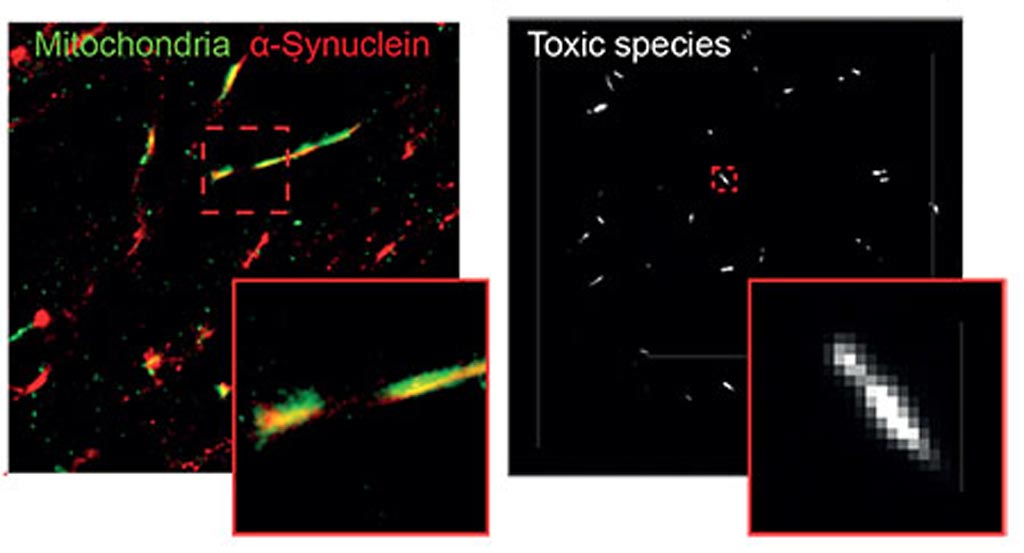Development of PD Linked to Mitochondrial Damage
By LabMedica International staff writers
Posted on 27 Jun 2018
An international team of neurodegenerative disease researchers has suggested a mechanism that links mitochondrial damage caused by insoluble fibrils of alpha-synuclein to the development of Parkinson's disease.Posted on 27 Jun 2018
The accumulation of misfolded alpha-synuclein amyloid fibrils leads to the formation of insoluble aggregates that have been implicated in several neurodegenerative diseases including Parkinson's disease, dementia with Lewy bodies, and Alzheimer's disease. It has been exceedingly difficult to define the structure of alpha-synuclein fibrils due to their insolubility and complexity. Multiplication of alpha-synuclein encoding gene (SNCA) is correlated with early onset of the disease.

Image: Alpha-synuclein in mitochondria of neuron (left) and single molecule TIRF image of individual alpha-synuclein aggregates (right) (Photo courtesy of Mathew Horrocks).
Investigators at The Francis Crick Institute (London, United Kingdom) and several British and American research institutes adopted a range of methods including single-molecule biophysical measurements, super-resolution microscopy, electrophysiology, and dynamic fluorescent neuronal imaging to describe the location and functional mechanism of oligomeric species of alpha-synuclein, compared to monomeric species. In addition, they generated neurons bearing a SNCA triplication mutation from pluripotent stem cells (iPSC).
Results published in the June 12, 2018, online edition of the journal Nature Communication revealed that aggregation of alpha-synuclein monomers generated beta sheet-rich oligomers that localized to the mitochondria in close proximity to several mitochondrial proteins including ATP synthase. Oligomers induced selective oxidation of the ATP synthase beta subunit and mitochondrial lipid peroxidation.
These oxidation events increased the probability of permeability transition pore (PTP) opening, triggering mitochondrial swelling, and ultimately cell death. Notably, inhibition of oligomer-induced oxidation prevented the pathological induction of PTP. Inducible pluripotent stem cells (iPSC)-derived neurons bearing SNCA triplication, generated alpha-synuclein aggregates that interacted with the ATP synthase and induced PTP opening, leading to neuronal death.
Senior author Dr. Sonia Gandhi, group leader at The Francis Crick Institute, said, "Our findings give us huge insight into why protein clumping is so damaging in Parkinson's, and highlight the need to develop therapies against the toxic form of alpha-synuclein, not the healthy non-clumped form."
Related Links:
The Francis Crick Institute













